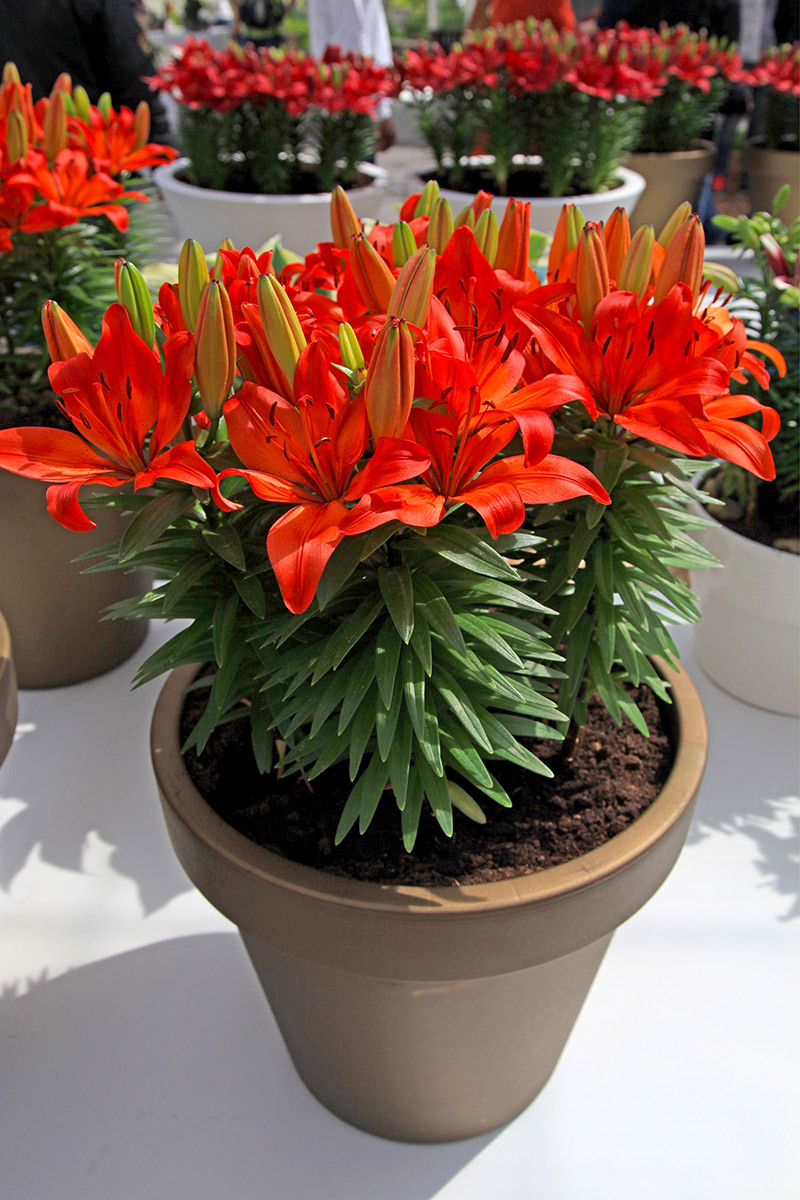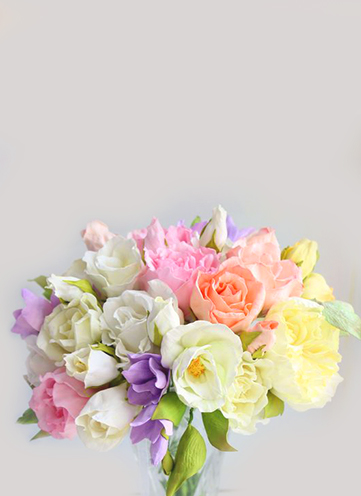Achieve Vibrant Orchid Blooms with Our Detailed Care Instructions
Posted on 21/08/2025
Achieve Vibrant Orchid Blooms with Our Detailed Care Instructions
Orchids are the epitome of elegance and sophistication when it comes to houseplants. Their exotic beauty, unique structure, and a diverse palette of colors make them highly sought-after by enthusiasts and beginners alike. However, to achieve vibrant orchid blooms consistently, it is essential to understand their specific needs and provide precise care. In this comprehensive guide, you will discover everything you need to know to nurture your orchids, ensure prolonged blooming, and keep your plants healthy year-round.

Understanding Orchids: An Introduction
Orchids belong to the family Orchidaceae, one of the largest and most diverse plant families in the world, comprising over 25,000 species and more than 100,000 hybrids. Whether you cultivate Phalaenopsis (moth orchids), Dendrobium, or Cattleya, their care requirements have common foundations, but some differences based on their natural habitats.
By following our detailed orchid care instructions, you will create the ideal environment for your orchids to flourish and bloom spectacularly.
The Key to Orchid Blooming: Light
Light is the most critical factor in achieving brilliant orchid blooms. Insufficient light is the leading cause of poor flowering. Orchids require just the right balance, as too much sunlight can scorch the leaves, while too little will hinder blooming.
Best Light Conditions for Orchids
- Place orchids near east- or west-facing windows, where they receive bright, indirect sunlight.
- Avoid direct midday sun to prevent leaf burn; use sheer curtains for filtration if necessary.
- Supplement with grow lights during darker months, especially if your natural lighting is limited.
- Phalaenopsis orchids thrive at light levels of 1000-1500 foot-candles, while Cattleya may require up to 2000 foot-candles.
Tip: Orchids with darker green leaves typically need less light than those with lighter, yellow-green leaves.
Watering Orchids for Prolific Blooming
Watering is another cornerstone of successful orchid care. Overwatering is a common mistake that leads to root rot and limits bloom potential, while under-watering stresses the plant and causes budding problems.
How to Water Orchids Correctly
- Use the "soak and dry" method: Allow the orchid potting mix to dry almost completely between waterings.
- Water with room-temperature, distilled, or rainwater to avoid chlorine and fluoride buildup.
- Frequency: Water once a week in moderate conditions, adjusting to every five days during active growth (spring and summer), and every 10-14 days in cooler months.
- Ensure proper drainage: Never let orchids stand in water--this will suffocate the roots.
Note: Orchids can store water in their thick roots and sturdy leaves, so it is safer to err on the side of under-watering than overwatering.
Humidity: Creating the Tropical Orchid Oasis
Most orchid varieties thrive in humidity levels between 40% and 70%. In dry environments, especially during winter with indoor heating, air can become too arid for optimal growth and blooming.
Enhancing Humidity for Orchids
- Use a humidity tray: Place a shallow tray filled with pebbles and water beneath the orchid pot.
- Group orchids together to allow their transpiration to boost nearby humidity.
- Mist orchid leaves lightly, but avoid wetting flowers and ensure there's ample airflow to prevent fungal diseases.
- Consider a small room humidifier for year-round comfort and healthy orchid blooms.
Pro tip: Regularly monitor humidity with a hygrometer, aiming for the 50-60% sweet spot for most indoor orchids.
Temperature: Mimicking Natural Orchid Habitats
Orchids originate from warm, tropical climates, but their specific temperature needs can vary:
- Phalaenopsis (moth orchid): Day: 65-80?F (18-27?C), Night: 60-70?F (16-21?C)
- Dendrobium: Day: 75-85?F (24-29?C), Night: 60-65?F (16-18?C)
- Cattleya: Day: 70-85?F (21-29?C), Night: 55-60?F (13-16?C)
To promote blooming, some species need a slight temperature drop at night (about 10?F lower than daytime).
Tips for Managing Temperature:
- Maintain day-night temperature fluctuation as required for your orchid species.
- Avoid placing orchids near heating vents, air conditioners, or drafty windows.
- Use a digital thermometer to monitor the average temperature in your growing area.
Fertilizing for Brilliant Orchid Flowers
Orchids grown in bark-based media need regular fertilization because the substrate doesn't retain nutrients like soil does. To achieve lush and vibrant blooms, fertilize wisely:
Orchid Fertilizer Guidelines
- Use a balanced, water-soluble orchid fertilizer (20-20-20 or similar) at half strength.
- Apply fertilizer every two weeks during active growth (spring and summer).
- Reduce fertilizing to once a month in the fall and winter when growth slows.
- Flush the potting mix with plain water monthly to prevent salt buildup from fertilizers.
Insider Tip: Some growers switch to a "bloom booster" formula higher in phosphorus (10-30-20) when flower spikes begin to form, supporting even more dazzling floral displays.
Repotting Orchids: Keep Roots Happy
Healthy roots are fundamental to stunning orchid flowers. As orchids outgrow their pots or the potting medium breaks down, they need repotting to maintain optimal air flow and moisture retention.
When & How to Repot Orchids
- Repot every 1-2 years, ideally after blooming ends.
- Signs to repot: declining bloom production, sour-smelling or compacted media, and roots growing over the pot edge.
- Choose a suitable orchid mix (bark chips, perlite, sphagnum moss, or a blend).
- Trim dead roots and gently tease apart living roots before repotting in a clean pot slightly larger than the previous one.
Tip: Orchids prefer being slightly root-bound--choose pots only 1 inch larger than the previous.
Air Circulation: Prevent Disease and Promote Growth
Proper airflow is crucial for orchids to prevent fungal infections and support healthy growth. Having stagnant air around orchids increases the risk of rot and weakens plants.
Orchid Airflow Best Practices
- Use an oscillating fan on a gentle setting near your orchid collection, especially in humid rooms.
- Ensure no cold drafts are present--orchids are sensitive to abrupt temperature changes.
- Space orchids apart so leaves do not touch, preventing the spread of disease.
Pest and Disease Management for Orchid Health
Even with ideal care, orchids may attract pests like scale, mealybugs, aphids, or mites. Fungal problems may occur if moisture sits on leaves or in crowded conditions.
Effective Orchid Pest Control
- Inspect new plants for bugs or signs of disease before introducing them near your orchids.
- Wipe leaves with a damp cloth to remove visible pests.
- Prune off infected or dead parts with sterilized scissors.
- Apply organic sprays like neem oil or insecticidal soap for mild infestations.
If a fungal infection is suspected (wilted, spotted, or mushy leaves), remove affected parts and reduce misting, keeping the plant in a well-ventilated space.
Encouraging Blooming: Orchid-Specific Tricks
Sometimes, your orchid may grow healthily but refuse to rebloom. The following strategies can help trigger vigorous orchid blooms:
- Provide the right temperature drop at night for several weeks, especially for Phalaenopsis, to stimulate spike growth.
- Ensure your orchid has recovered from previous blooming and received enough light and nutrients.
- Do not disturb roots unnecessarily when spikes are starting to form.
- Switch to a bloom-promoting fertilizer for a few cycles.
- Patience is key: Some orchids, like Paphiopedilum, bloom only once a year but display blooms for months.
Frequently Asked Questions about Orchid Blooms
1. Why won't my orchid bloom?
The most common reasons are insufficient light, overwatering, inadequate nutrition, or not enough nighttime temperature drop. Revisit all care parameters and make adjustments as needed.
2. How long do orchid flowers last?
Depending on the species, orchid blooms can last from several weeks up to four months. Phalaenopsis flowers, for instance, are famous for their longevity.
3. Should I cut off old flower spikes?
Yes, but wait until the spike is fully brown and dried. Cutting it just above a node may promote a side spike or keiki (baby plant) formation in some varieties.
4. What's the best orchid for beginners?
Phalaenopsis is widely regarded as the best starter orchid due to its forgiving nature and impressive bloom display.
Seasonal Orchid Care for Ongoing Blooms
Your approach to maintaining orchid blooms should adjust with the seasons:
- Spring/Summer: Increase light, water, and fertilization as growth accelerates.
- Autumn: Gradually reduce watering and begin cooling nights to stimulate flower spikes.
- Winter: Monitor heating to avoid dry air, cut back on fertilizer, and provide supplemental light if necessary.
Staying attuned to seasonal changes supports robust flower spike formation and encourages a consistent bloom cycle year after year.
Top Mistakes to Avoid for Vibrant Orchid Blooms
- Overwatering or allowing roots to sit in soggy media.
- Placing orchids in dim corners with poor light.
- Using regular potting soil instead of specialized orchid mix.
- Neglecting to repot, leading to compacted roots and poor airflow.
- Ignoring humidity or temperature requirements.
- Applying too much fertilizer, resulting in salt burn.

Conclusion: Become an Orchid Bloomer Extraordinaire
With these comprehensive orchid care instructions, you will unlock the full potential of your plants and enjoy abundant, colorful blooms year after year. Remember that every orchid is unique, and close observation combined with patient adjustment is the secret to success. Establish the right balance of light, water, nutrients, humidity, and warmth--and your orchids will reward you with breathtaking floral displays, season after season.
Start implementing these tips today and watch as your orchids transform into vibrant, blooming centerpieces in your home or garden!
Orchid Care Summary Table for Achieving Vibrant Blooms
| Factor | Best Practice |
|---|---|
| Light | Bright, indirect sunlight; supplement with grow lights |
| Water | Soak and dry method; water once a week on average |
| Humidity | Maintain 50-60% using trays or humidifiers |
| Temperature | Day: 65-85?F, Night: 55-70?F (varies by species) |
| Fertilizer | Orchid fertilizer at half-strength, every 2 weeks in growth |
| Repotting | Every 1-2 years, using orchid-specific medium |
| Air Circulation | Gentle fan nearby, avoid stagnant air |
Empower your green thumb and enjoy a world of vivid orchid blooms with these expert care instructions!
Latest Posts
Easy-Going Office Plants for a No-Fuss Work Environment
Achieve Vibrant Orchid Blooms with Our Detailed Care Instructions
Effective Habits for Enduring Flower Beauty





